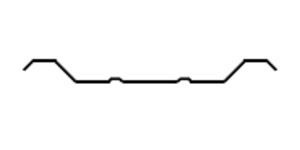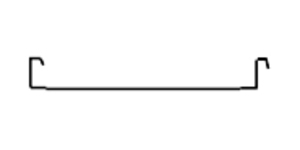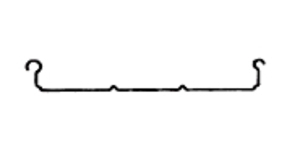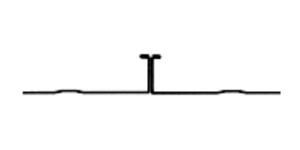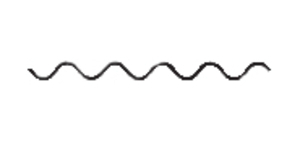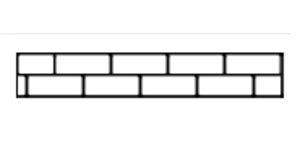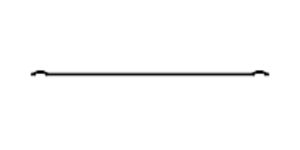Buyers Guide for Snow Guards
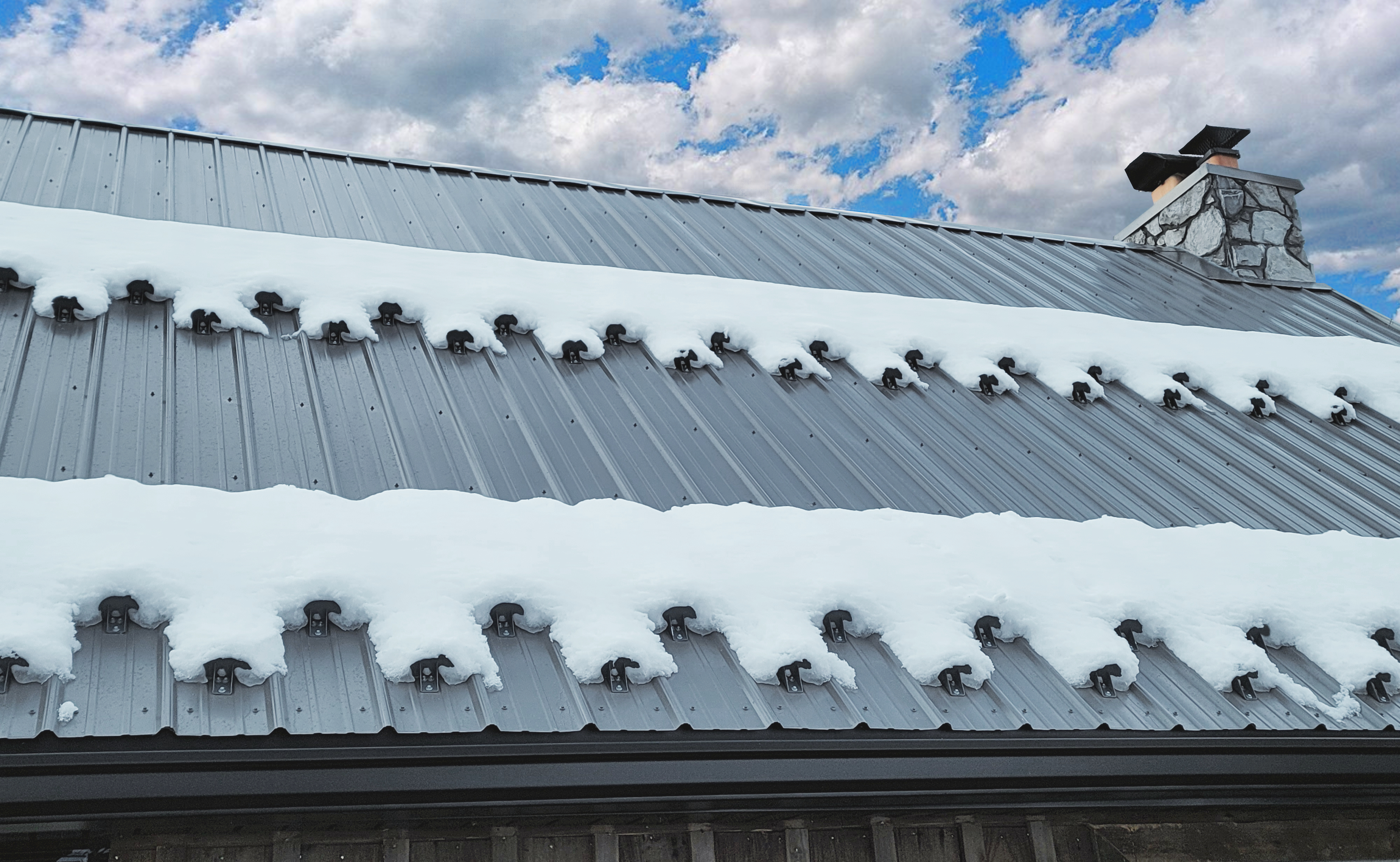
Simplified and Strategic Snow Guard Buying Guide
Are you getting your home ready for the winter season and worried about snow and ice sliding off your metal roof? You should be! In climates that receive any amount of winter precipitation, snow guards are a crucial addition to your metal roofing system. A properly installed snow retention system prevents snow and ice from suddenly sliding off and potentially causing damage to property or injuring people and pets.
Purchasing a snow retention system for the first time can be overwhelming. Choosing the right snow guards is not always as straightforward as it may seem. The market today offers a wide variety of snow guard options. When selecting snow guards for your roof, it's important to consider several factors, including your snow load, roof slope, and roof type. This buyer's guide will help you make an informed decision when purchasing snow guards for your roof.
Step 1:
Know Your Roof Type:
When it comes to roofing, the options are endless! From stylish shingles to durable metal, there's a perfect fit for every type of building. SnoBlox-Snojax offers snow retention solutions for almost every kind of roof. Most of our snow guards primarily work on sloped metal roofing. There are two different types of metal roofing: Standing Seam (Floating) Panels and Exposed Fastener (Screw-Down) Panels. If you are unsure of the difference between the two types of panels, please see our recent blog post. The information below shows the roof types and which snow guards work with the various types of roofs.
| Roof Type | Recommended Snow Guards | Notes |
|---|---|---|
| Exposed Fastener R-Panel, PBR | SnoBar, ColorBar, SnoCleat, Pad Style Screw Down | Penetrates Roof Panel |
| Standing Seam Metal Roof | SnoBar, ColorBar and SnoCleat, Pad Style Glue Down | No Panel Penetrations |
| Bulb & T-Seam SSR Panels | SnoBar RCB-3, ColorBarRCB-3 and SnoCleat RCT | No Panel Penetrations |
| Wavy 2.67 Corrugated Panel | SnoCleat 2.67, SnoBar 2.67, ColorBar 2.67 | Penetrates Roof Panel |
| Shingle Roof or Slate Roof | Shingle Bracket, Slateguard | Slides Under Roof Shingles |
| Membrane/TPO Roofing | Membrane Mount for SnoBar and Colorbar | Screw Down / Flash Over |
Step 2:
Understand Your Roof Snow Load & Climate
If you're in the mountains of Colorado, you're dealing with serious snow. The amount and type of snow your region receives will influence the design and quantity of snow guards required. This number represents your average ground snow load data collected over the span of 50 to 70 years, depending on your region. Countries using the imperial system describe it as pounds per square foot (PSF). Countries that use the metric system measure this value in kilopascals (kPa). When calculating a site's design roof snow load, the ground snow load, also known as PG, is taken into account. Various weather stations throughout the United States gathered historical data to derive this figure. Your building plans usually include snow load calculations, or you can contact your local building inspector for assistance. The ASCE 7 (chapter 7 - Fig 7.2.1, ASCE 7-16) or the ATC website will typically also include information on this number.
- Light Snow (0–20 psf): Screw-Down, Glue-Down, or Clamp-On Snow Guards
- Moderate Snow (20–45 psf): Screw-Down, Glue-Down, or Clamp-On Snow Guards
- Heavy Snow (45+ psf): SnoBar or ColorBar Systems Only.
Step 3:
Obtain the measurements of your building and determine the pitch of the roof.
The roof pitch plays a vital role in snow guard installation! Steeper roofs tend to experience more severe avalanches, so it's essential to consider their unique snow retention needs for safety and effectiveness. Begin by accurately measuring the distance from the ridge to the eave. This measurement is called the run. Roofers measure roof pitch in degrees, as a ratio (e.g., 4:12), or as a percentage (e.g., 33%). These measurements indicate how steep or shallow the slope is. Roof pitch is a simple calculation of rise over run. For example, you would express a 4" rise and a 12" run as 4:12. If you need more help, please see our roof pitch resource page.
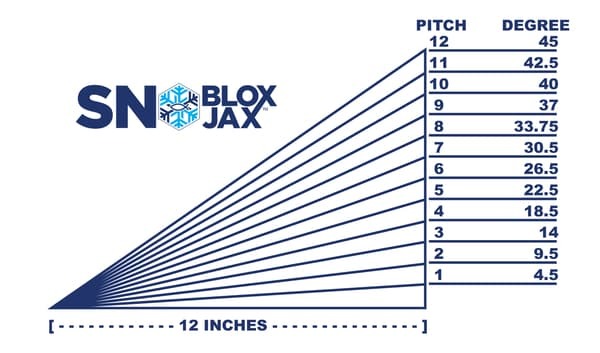
Step 4:
Determine the Recommended Snow Guard Spacing Requirements
The style of snow guard, roof pitch, length of roof, distance between the eave and ridge, snow load, and other variables all play a role in determining how many snow guards you need. Proper installation is critical to the effectiveness of snow guards. Whether you are installing your snow retention system by yourself or hiring a professional, make sure that you are taking a moment to visit our snow guard spacing tool or read over our spacing guidelines for your desired system. A proper layout will extend the full length of the roof section that you are looking to protect. It will often require multiple rows going up the slope to evenly distribute the weight of the snow and ice over the entire roof surface, not just at the bottom. Snow guards should not be subject to impact. Their purpose is not to act as a roadblock for sliding snow and ice. Snow guards effectively secure snow and ice on glossy metal roofs, allowing it to melt gradually and drain safely into your gutters. If you are looking for help with your layout, we have quote request forms for both our individual snow guards and rail systems.
| Panel Width & Pitch | 1/12 - 2/12 | 3/12 - 4/12 | 5/12 - 6/12 | 7/12 - 12/12 |
|---|---|---|---|---|
| 12" to 16" Valley | 1 Every Panel Flat - 15 Feet Going Up The Roof | 1 Every Panel Flat - 10 Feet Going Up The Roof | 1 Every Panel Flat - 8 Feet Going Up The Roof | 1 Every Panel Flat- 5 Feet Going Up The Roof |
| 17" to 24" Valley | 2 Every Panel Flat - 15 Feet Going Up The Roof | 2 Every Panel Flat - 10 Feet Going Up The Roof | 2 Every Panel Flat - 8 Feet Going Up The Roof | 2 Every Panel Flat - 5 Feet Going Up The Roof |
| Panel Flat & Roof Pitch | 1/12 - 2/12 | 3/12 - 4/12 | 5/12 - 6/12 | 7/12 - 8/12 | 9/12 - 12/12 |
|---|---|---|---|---|---|
| 9" to 12" | 1 Every Flat - 25 ft. Going Up The Roof | 1 Every Flat - 20 ft. Going Up The Roof | 1 Every Flat - 10 ft. Going Up The Roof | 1 Every Flat - 6 ft. Going Up The Roof | 1 Every Flat - 5 ft. Going Up The Roof |
Request A Snow Rails Price Quote
Submit a SnoBar and ColorBar Snow Rail Quote Request if your area has a ground snow load over 45 pounds per square foot so that we can provide accurate spacing guidance.
What are the different types of snow guards for metal roofs?
These are small or large individual metal or polycarbonate snow guards that are mounted in the flat of the panel and feature a face that sits perpendicular to the roof slope and points up the hill towards the peak. This style of snow guard offers three options for installation. Installers can install both screw-down and clamp-on snow guards throughout the year. We advise installers to apply adhesive attachments during the spring, summer, or early fall. Never install snow guards using screws on a standing seam metal roof. Pad-style snow guards should be installed in staggered formations to ensure better weight distribution.
These are individual metal snow guards featuring screw-down brackets or non-penetrating clamps that are attached to the roof and hold snow and ice in place. These guards feature small sections of the ColorBar system that act as the face of the guard. Bracket Style Snow Guards, like Pad style snow guards, are mounted in staggered formations for greater weight distribution.
Also referred to as roof snow fences, these are horizontally mounted bars made of galvanized steel, aluminum, or stainless steel. They are installed on the roof to create a physical barrier against snow and ice. Our snow retention systems fit various popular roofing styles. Bar Style Snow Rails mount in continuous straight-row formations. Interesting fact: The SnoHorse, also known as the SnoBar, was the first standing seam clamp-on snow rail.
Compare Snow Guards
|
|
||||||||||
|---|---|---|---|---|---|---|---|---|---|---|
Peel & Stick: |
|
|||||||||
Peel Stick & Screw: |
||||||||||
Glue Down Application: |
|
|||||||||
Screw Down Application: |
||||||||||
Waffled/Base: |
|
|
|
|||||||
12" Seams
Glue Down: |
|
|
||||||||
|
9" Seams
Glue Down: |
|
|
|
|||||||
|
12" Seams Screw Down: |
||||||||||
|
9" Seams Screw Down: |
||||||||||
Powder Coat Option: |
Compare Snow Rails and Snow Bars
|
|
||||||
|---|---|---|---|---|---|---|
|
Clamp-On Application:
|
|
|
|
|
||
|
Screw Down Application:
|
||||||
|
Powder Coat Option:
|
|
|
|
|
||
|
IceStoppers Available:
|
|
|
Compare Specialty Snow Rails and Snow Bars
|
|
||||
|---|---|---|---|---|
|
Clamp-On Application:
|
|
|
||
|
Screw Down Application:
|
||||
|
Powder Coat Option:
|
|
|
|
|
|
IceStoppers Available:
|
|
|
Other Factors to Consider When Purchasing Snow Guards
The type of snow guard that you need depends greatly on your roofing material, slope, and geographical location. The most common type of roof that requires snow retention is glossy coated metal roofing. It is also common to use snow guards on steep shingle roofs, slate roofs, and TPO/membrane roofs.
The amount and type of snow that your region receives will impact both the design and quantity of snow guards needed for your building. The measurement of the weight of snow on your roof is called the snow load. In countries that use the imperial system, the snow load measurement is in pounds per square foot (PSF). In contrast, in metric system countries, snow loads are measured in kilopascals (kPa). When calculating the design roof snow load for a site, the ground snow load (also known as PG) is an important factor. Snow loads come from historical data collected from weather stations across the United States. You can typically find this number on your building plans or by contacting your local building inspector.
Snow guards come in various colors and styles. Choose one that complements your roof's appearance. Most polycarbonate guards are clear in appearance, casting little shadow and blending in with your roof. Metal guards and rail systems are available in mill or custom powder-coated finishes. When in doubt, take a drive around your neighborhood and check out what others in your area have installed for inspiration.
Some snow guards are easier to install than others. If you lack experience with roof work, hire a professional for the installation. If you decide to hire a professional, any licensed and insured general roofing contractor should be able to install these guards for you. Our products come with simple-to-follow instructions that are also available online before you place your order.
Invest in high-quality snow guards made from sustainable and durable materials to ensure longevity. Not all plastics and metals are the same. We pride ourselves on using only materials that are manufactured here in the USA. It is also important to make sure that you are purchasing from reputable companies that specialize in snow guards. It is becoming increasingly common for injection molders to copy products without providing any knowledge or support to their customers.
Prices vary based on style and quality. Obtain multiple quotes and compare prices. Make sure to compare apples to apples when making your final decision. It is also important to compare the warranty information provided by different manufacturers. A product that a company is willing to stand behind may be worth more to you than saving a few cents per snow guard or per foot of snow rail system.
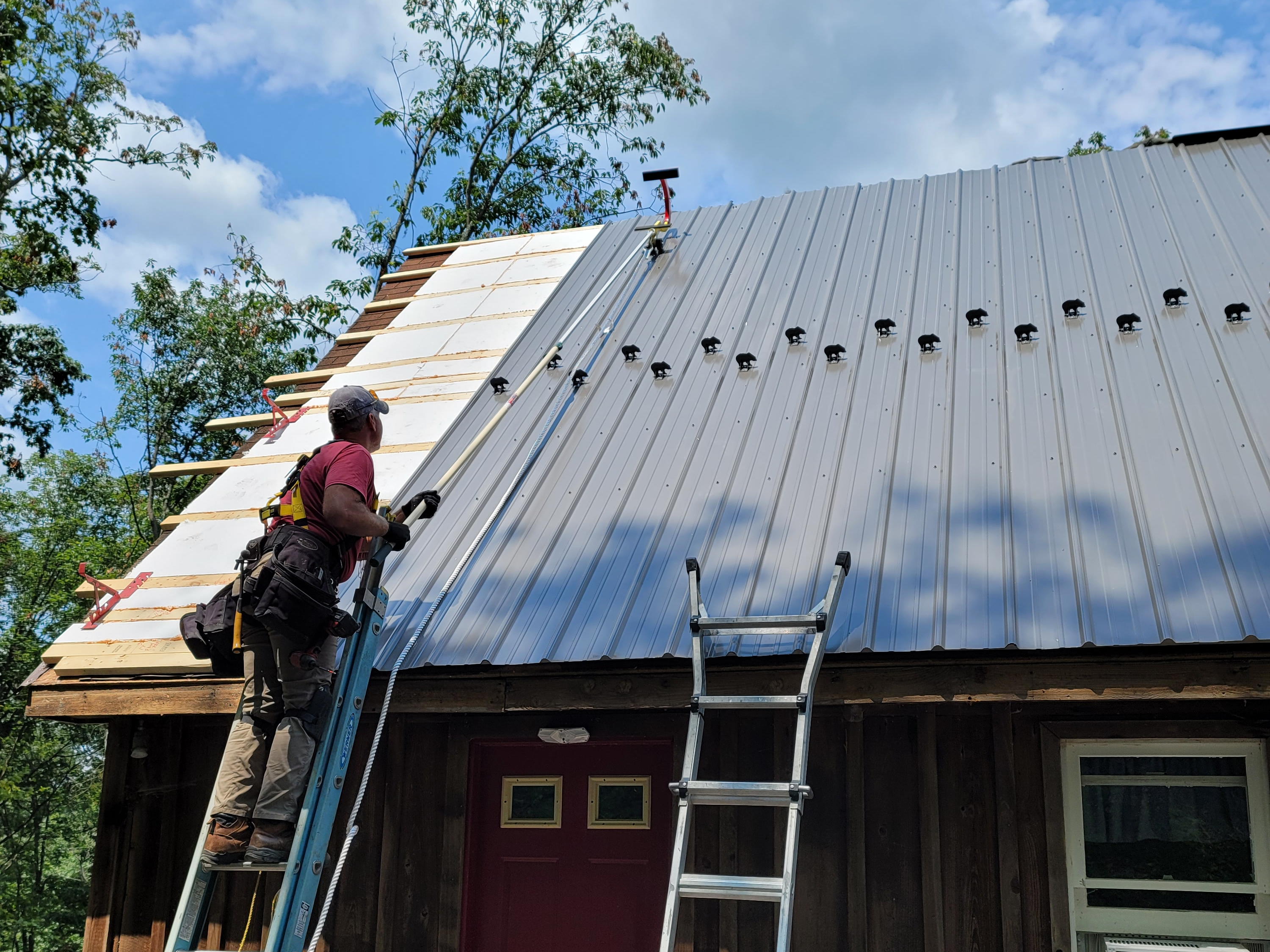
Get A Snow Guard Quote
Please fill out the snow guard quote request for your project.
Snow Guard Buyer's Guide Conclusion
Snow guards are a valuable addition to your roof, protecting snow and ice-related issues. Before making a purchase, carefully assess your roofing needs, consult with professionals, and choose the right style and quantity of snow guards. With proper installation, you can enjoy a safer and more secure winter season.

